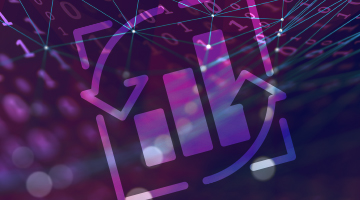Key Takeaways
- Fixed Wireless Access (FWA) is an early 5G success, providing reliable broadband in urban areas, especially in developing countries where traditional cable infrastructure is impractical.
- Edge computing, enabled by 5G's high bandwidth and low latency, offers cost savings by reducing the need to move large amounts of data to and from the cloud, and enhances security.
- Consumer appliances, like edge-enabled dishwashers, leverage 5G and IoT to reduce 'truck roll' costs by enabling remote diagnostics and issue resolution.
- 5G is quietly making a difference through FWA, edge computing, and consumer appliances, and with the right data platform, any 5G use case could become a 'killer' application.
- The 'killer' 5G use cases may not be 'sexy' but rather functional, offering small, incremental improvements and cost savings that add up to significant overall value.
Last week I had the chance to speak in two separate panels at RCR Wireless’s 5G Monetization Forum: “Creating a Win-Win Business Model for all Players in the Value Chain“ and “Scaling with Flexibility. Multi-access Edge Computing (MEC) – Monetizing a world of Capabilities”.
The common thread? 5G and its use cases.
Ever since 5G appeared, people have been searching for that “killer use case”— the one that will lead to huge results (ie, revenue) with minimal effort.
This hasn’t quite materialized—yet.
But the good news is that there are clear areas of initial success, any of which could become that killer use case we’ve been waiting for.

From top left: Eugina Jordan (Telecom Infra Project), David Rolfe (Volt), Rahul Atri (Appledore Research), Danny Han (consultant) — speaking in the “Creating a Win-Win Business Model for all Players in the Value Chain” discussion.
These were the ones we chatted about at the RCR conference:
Table Of Contents
1. Fixed Wireless Access (FWA)
FWA is a clear early 5G success story. Not quite the flying cars we were promised, but good nevertheless.
FWA enables a lot of urban areas in the developing world to get reliable broadband for the first time. Given that 37% of the world’s population has never used the internet, this is significant.
In a lot of developing markets, legacy issues with property rights and lack of functioning planning systems mean running cables into residences is not a practical proposition.
A 5G hotspot on a local streetlight is, however, viable, so 5G is enabling FWA at a whole new level.
It’s also important to note that many organizations such as banks, retail outlets, and government agencies are increasingly moving online. As a result, if you’re not on the internet your level of connectivity to society is going to degrade to 19th-century levels over the next decade or so as local ‘face-to-face’ facilities move to cyberspace.
In this sense, FWA is arguably just as important as the first cell phones.
2. Edge Computing
“What happens at the edge stays at the edge”, as they say. Or at least it should if you’re using the edge correctly.
Edge technology is a key tool/ingredient of 5G monetization; the link being that the high bandwidth and low latency of 5G allows you to maintain network capacity even when controlling a swarm of edge devices. In theory, low- latency applications were going to drive edge adoption. In practice, we’re seeing the 5G monetization opportunities come in the form of cost savings from not having to move enormous quantities of data back and forth from the edge. Backhaul and cloud ingress/egress costs can get very high, especially when they involve things like video that devour bandwidth.
Security is another factor for edge adoption. Edge data is a lot harder to steal than cloud data. A decade ago, everyone was trying to collect as much data as possible in their data lake. Now we realize that in many cases all we were actually doing was creating a reservoir of bad news, criminal hacking opportunities, and embarrassing conversations.
There’s another very interesting edge-related 5G use case that many people are still overlooking: CCTV and autonomous mobile robotics (AMR), which, combined with edge computing, can significantly increase the operational efficiency of warehouses and factories.
3. Consumer Appliances
This is also edge-related but deserving of its own section.
Traditionally when we’ve talked about digital twins, edge, and so on, it’s been in the context of very expensive hardware such as jet engines, where lateness in diagnosing a problem could cost a fortune.
But another, perhaps surprising category where 5G is starting to make inroads is in consumer appliances, where the same technological shift is starting to take place.
I recently bought an edge-enabled Bosch dishwasher. At first sight this seems like a classic example of IoT overkill. Having an app on my phone to start it is great, but I still need to be there to load and unload it.
However, there’s one huge manufacturing-related advantage to an IoT-enabled dishwasher: reduction of “truck roll”. My dishwasher cost me around 500 euros and has a two-year warranty. if it breaks during that time, Bosch has to fix it on their own dime if it’s their fault. Doing a ‘truck roll’ (ie, having to actually send someone to go out and fix the dishwasher at my home) for this is very expensive when you compare it to the cost of the dishwasher.
But now (thanks to edge/IoT technology), when my dishwasher breaks, Bosch can tell remotely if it’s because I failed to clean a filter, in which case they’d have to try and charge me a callout fee because I should have read the manual, or the dishwasher is just truly broken, in which case they can ship a replacement instead of wasting a trained technician’s time. So instead of vast streams of data flowing back and forth and a costly truck roll, support costs go way down because they get one very valuable piece of edge data instead — an error code— and the Bosch app’s real purpose is to incentivize me to connect the dishwasher to the internet to make this possible.
What does this have to do with 5G? What we’re seeing in factories foreshadows what we can expect to see in our homes in the next decade. Once everything you own is full of sensors and capabilities a domestic scale version of ‘Metcalfe’s law’, in which a network’s power (and value) expands exponentially with the number of nodes in it, kicks in.
Is the 5G Killer Use Case Actually Here?
I know I started this blog by saying that the 5G killer use case hadn’t materialized, but maybe I was wrong. Maybe it has. It’s just that nobody has realized its full potential yet.
Via FWA, edge use cases, and consumer appliances, 5G is certainly starting to make a difference in people’s lives (however clandestinely), and the truth is that with the right underpinning data platform any 5G use case could easily end up becoming a killer 5G use case.
Remember when the Internet first arrived? Everyone said it was a flash in the pan and impossible to monetize.
We all know how that story ended.
5G — which is now already becoming 6G — could very well be the same and seems to be having a similar “stealth” type of trajectory. Small use cases building into big ones. Small issues getting resolved, adding up to major cost savings.
Maybe “sexy” is the qualifier we need to add here.
It’s not that there isn’t a “killer” 5G use case. It’s that there isn’t a “sexy” killer use case: just use cases that kind of work humbly in the background. But hey — that’s tech. Not commonly sexy. Very commonly functional.




